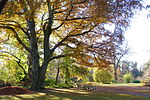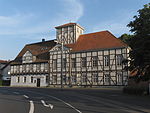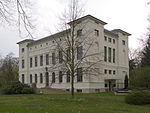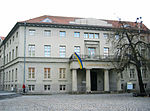Volkswagenwerk Braunschweig

Volkswagenwerk Braunschweig is a factory site for Volkswagen automobile parts in Braunschweig (Gifhorner Str.), Germany. Production started on 1938-02-23 (before Volkswagenwerk Wolfsburg) for manufacturing steering components of „KdF-Wagen" (VW Käfer) and tools for Junkers Flugzeug- und Motorenwerke in Dessau. Until today, only components for vehicles of VW Group (Audi, Škoda, SEAT and Bugatti) are produced, such as running gears, axles, shock absorbers, brake parts and all pedals. As of 2006, approx. 6,200 workers were employed, thus making it the largest industrial site in the city. In 2010, the number of workers amounted to 5,548. In 2014, 6625 people worked here.
Excerpt from the Wikipedia article Volkswagenwerk Braunschweig (License: CC BY-SA 3.0, Authors, Images).Volkswagenwerk Braunschweig
Mittelstraße, Brunswick Nordstadt-Schunteraue
Geographical coordinates (GPS) Address Nearby Places Show on map
Geographical coordinates (GPS)
| Latitude | Longitude |
|---|---|
| N 52.293611111111 ° | E 10.523055555556 ° |
Address
Mittelstraße
38112 Brunswick, Nordstadt-Schunteraue
Lower Saxony, Germany
Open on Google Maps









